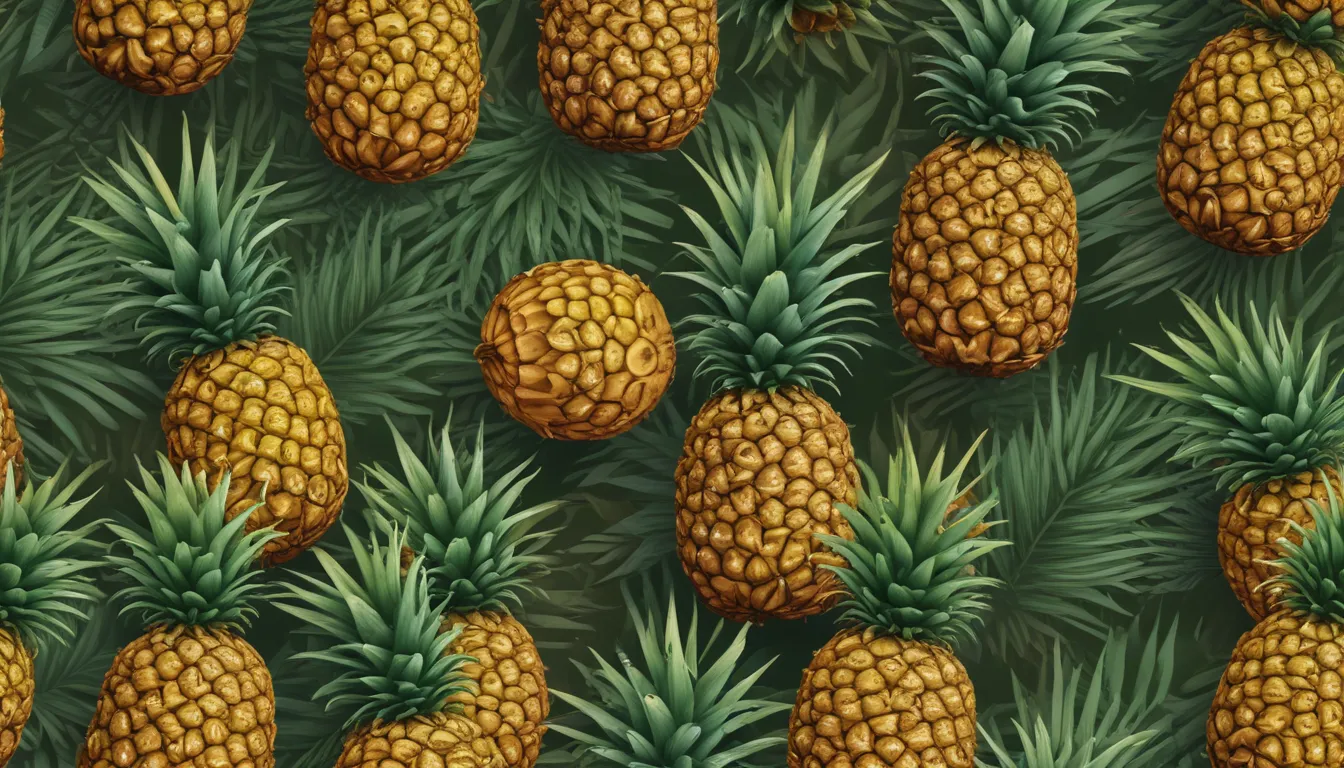The pictures in our articles might not always show exactly what the text is talking about. We use these images to make the article more interesting and eye-catching. They are there to add to the text, but not to replace it or show every detail.
Pineapples, with their prickly crown and sweet taste, have an intriguing history and a plethora of health benefits. From their symbolism of hospitality to their cultivation methods, there's a lot to learn about these tropical fruits. Let's explore some fascinating pineapple facts that will leave you amazed and inspired.
The Origin of Pineapples
The journey of pineapples began in South America and eventually made its way to Europe thanks to Christopher Columbus. Initially called 'pina' due to its resemblance to a pine cone and apple due to its fruit nature, pineapples have a rich historical background. They symbolize welcome and hospitality, making them a popular choice for decorations and gifts.
Nutritional Value of Pineapples
Pineapples are not just a tropical treat; they are also packed with essential nutrients. From fiber to vitamin C and manganese, this fruit offers a wide range of health benefits. Despite their near-zero fat and protein content, pineapples are a great source of carbohydrates and water, making them a refreshing snack.
Cultivation and Production of Pineapples
Did you know that pineapples can take up to 24 months to grow, depending on the type? Whether it's the 'tops,' 'suckers,' or 'slips,' each variety has its own timeline for producing fruit. Pineapples don't grow from seeds; instead, they develop from the top of a planted stem. Smoke can even be used to stimulate flowering in pineapples, a unique cultivation method.
Fun Facts About Pineapples
From their unique growth patterns to their diverse culinary uses, pineapples are full of surprises. Whether it's their status as a symbol of wealth in 18th-century England or their role in fabric manufacturing, there's more to pineapples than meets the eye. Pineapples also make a great meat tenderizer, thanks to their bromelain content.
How to Choose and Ripen Pineapples
When selecting a pineapple, look for yellowish or orangey hues, as they indicate ripeness. Contrary to popular belief, pineapples do not ripen on their own after being picked. To speed up the ripening process, store the fruit with ethylene-producing fruits like apples or tomatoes. For even ripening, try balancing the pineapple upside-down to distribute sugars evenly.
Pineapples are not just a delicious fruit; they are also a fascinating subject filled with unique characteristics and uses. Whether you're exploring their origins or learning about their health benefits, pineapples offer a treasure trove of knowledge waiting to be discovered. So next time you bite into a slice of pineapple, remember the rich history and valuable insights behind this tropical delight.






